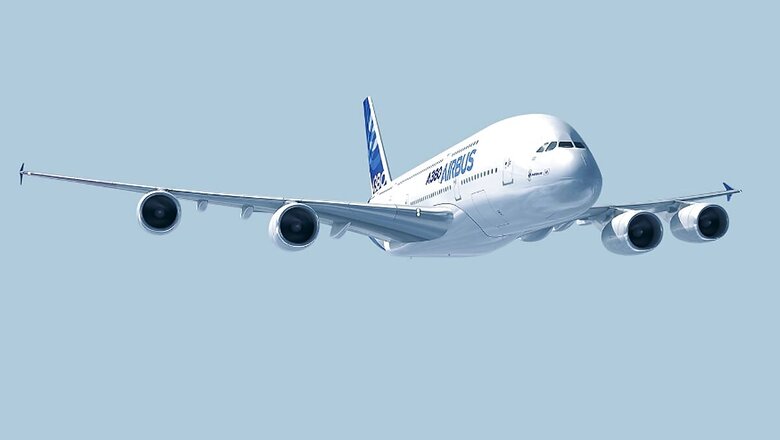
views
Airbus unveiled Friday the carbon footprint of its aircraft, a move that will help measure progress made by the aviation industry towards its goal of reducing emissions. It is the first time an aircraft manufacturer has released lifetime carbon emissions of its aircraft, and Airbus Executive VP Corporate Affairs Julie Kitcher said it was an opportunity to increase transparency in the sector. “We really want to demonstrate our commitment to driving decarbonisation of the sector," she said.
The industry currently represents 2 percent of global CO2 emissions, according to the International Civil Aviation Organization, but a forecast rise in passenger air traffic means it could add more pollution to the skies unless measures are taken rapidly.
And between the “flygskam" movement, a Swedish neologism meaning “flight shame", to increasing social responsibility expectations among investors, the industry is under mounting pressure to meet its promise to cut its carbon emissions by half from 2005 levels by 2050.
Airbus calculated that the 863 planes that it delivered in 2019 will emit 740 million tonnes of CO2 during an estimated 22 years in service. As a point of comparison, France is estimated to have emitted 441 million tonnes of CO2 in 2019.
Airbus used the accounting measure for emissions used by most leading firms, the Greenhouse Gas Protocol, including measuring the use of its products by consumers. Airbus pointed out, however, that the efficiency of its planes is improving.
It calculated that the planes delivered in 2019 will produce on average 66.6 grams of CO2 per passenger per kilometre. In 2020, that figure dropped to 63.5 grams per passenger kilometre. The current commercial aircraft fleet, including older aircraft, is estimated to emit on average 90 grams per passenger kilometre, according to the NGO International Council on Clean Transportation (ICCT).
It estimates that cars produce an average of 122 grams per kilometre, but that figures needs to be divided by the number of passengers in the vehicle to offer a real comparison.
While the information is useful, Airbus’s Kitcher pointed out that it only offers a snapshot of the situation today. That is because the industry is hoping for the development of sustainable aircraft fuels (SAF) made from renewable sources to reduce its emissions.
The predicted carbon dioxide emission levels would drop if the aircraft that Airbus delivered in 2019 are certified to accept up to 50 percent SAF, although the amount of the green fuel available today is extremely low.
“If we had 50 percent of SAF going into our aircraft today we could reduce the emissions of our aircraft flying already by 40 percent," Kitcher said.
An increase to 100 percent SAF, the use of hydrogen produced in a renewable manner, or battery powered aircraft could push down emissions even further.
But to reach the 2050 goals, as well as head towards zero emissions, requires a fleet of planes that is 90 percent more efficient than those in 2005 given the expected increase in air travel. Last year Airbus released three zero-emission concept planes powered by hydrogen that it said could enter service by 2035.
The aviation industry is also counting on better air traffic control and efficiency gains from engines to reduce CO2 emissions.
Read all the Latest News, Breaking News and Afghanistan News here
















Comments
0 comment